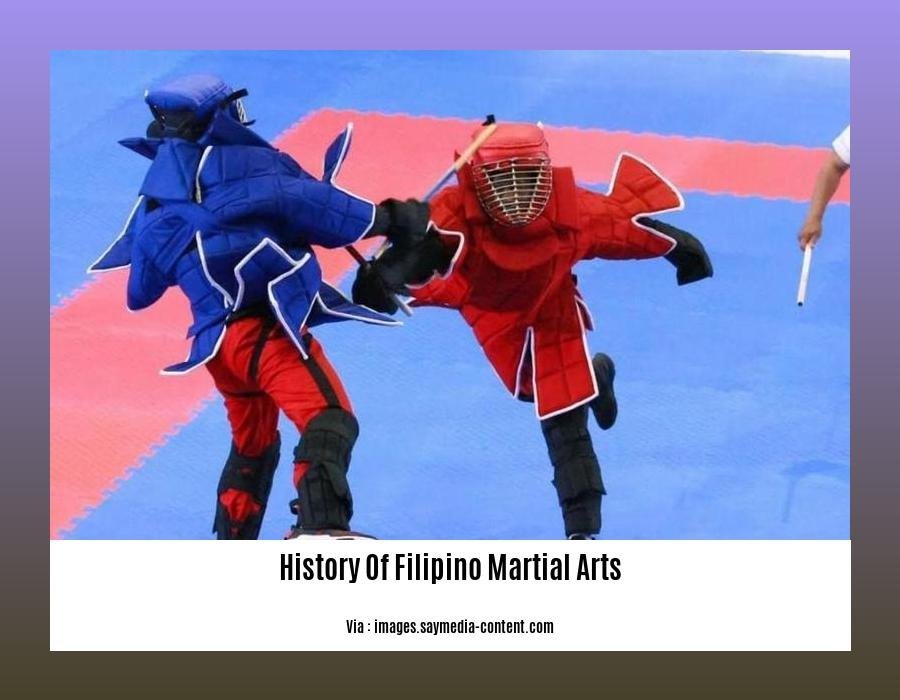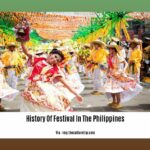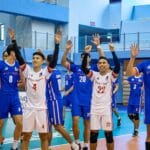Embark on an enlightening journey into the depths of Filipino Martial Arts (FMA) in our article, “Exploring the Profound History of Filipino Martial Arts: A Journey into Cultural Heritage and Martial Prowess.” Discover the captivating origins, diverse styles, and enduring legacy of this remarkable art form, meticulously unveiled by an experienced historian and FMA aficionado.
Key Takeaways:
- Arnis, Eskrima, and Kali are popular forms of FMA.
- The Philippines’ history of invasions led to the development of FMA for self-preservation.
- Filipino martial arts blend Western and Eastern styles.
- FMA has gained recognition in the world due to Hollywood movies and modern masters.
- FMA is a rich heritage and cultural expression of the Philippines.
History of Filipino Martial Arts
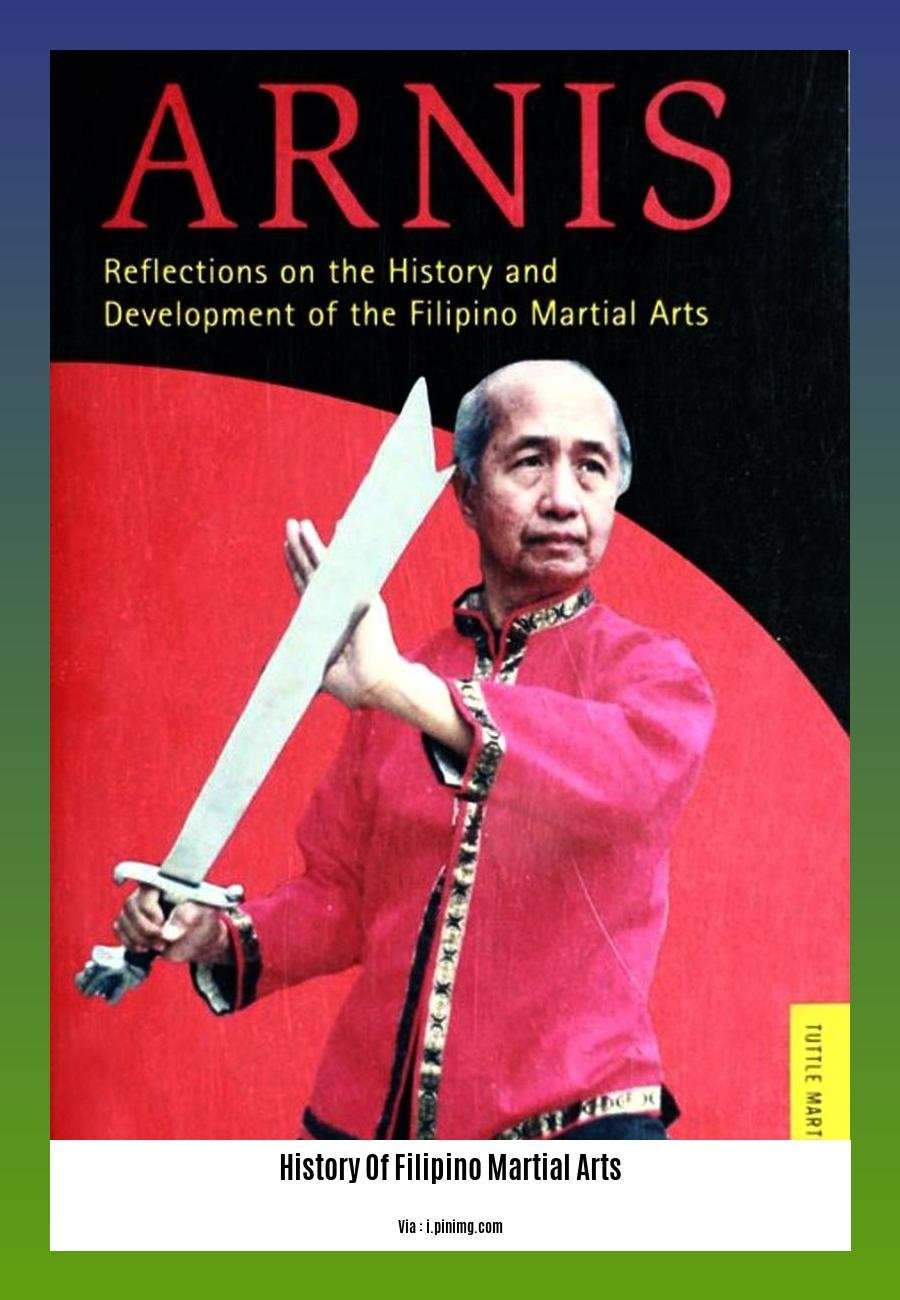
In the realm of combat disciplines, Filipino martial arts (FMA)—encompassing Arnis, Eskrima, and Kali—stand out as a unique blend of indigenous techniques and influences from various cultures. Their origins can be traced back to the pre-colonial Philippines, where the need for self-preservation against foreign invaders and tribal conflicts fueled the development of these fighting systems.
Ancient Roots and Cultural Influences
The history of Filipino martial arts is deeply intertwined with the country’s rich cultural heritage. The indigenous fighting methods of the various ethnic groups, coupled with influences from neighboring Southeast Asian countries like Indonesia and Malaysia, formed the foundation of FMA.
When Spanish colonizers arrived in the Philippines in the 16th century, they brought with them their own martial traditions, including fencing and wrestling. These European influences blended with existing Filipino fighting systems, giving birth to new and more sophisticated techniques.
The Crucible of Conflict
The constant state of conflict and invasions in the Philippines throughout history served as a crucible that forged the effectiveness of FMA. Filipino warriors needed a practical and efficient system to defend themselves against enemies armed with superior weapons and armor.
FMA practitioners developed a focus on close-quarters combat, using weapons such as sticks, blades, and improvised objects. They also emphasized disarming techniques and counter-attacks, making them formidable opponents in both armed and unarmed combat.
Modern Revival and Global Recognition
In the 20th century, FMA experienced a resurgence of interest, thanks to the efforts of dedicated Filipino martial artists who sought to preserve and promote their cultural heritage. Grandmasters like Remy Presas, Cacoy Canete, and Dan Inosanto played a pivotal role in popularizing FMA worldwide through their teachings and demonstrations.
Today, FMA has gained international recognition and is practiced by martial arts enthusiasts across the globe. Its unique blend of history, culture, and combat effectiveness continues to captivate and inspire practitioners of all levels.
-
Dive deep into the rich and vibrant history of the Philippines, which is closely intertwined with the myriad of festivals celebrated throughout the country, each reflecting its unique customs and traditions – history of festivals in the Philippines
-
Discover the fascinating history of Florida Water, from its origins as a religious remedy to its transformation into an iconic and enduring symbol of the Philippines – history of Florida water
Lineage and Masters: Profiling renowned Filipino martial arts masters and their contributions to the preservation and evolution of the art, including their teaching methods and impact on the community.
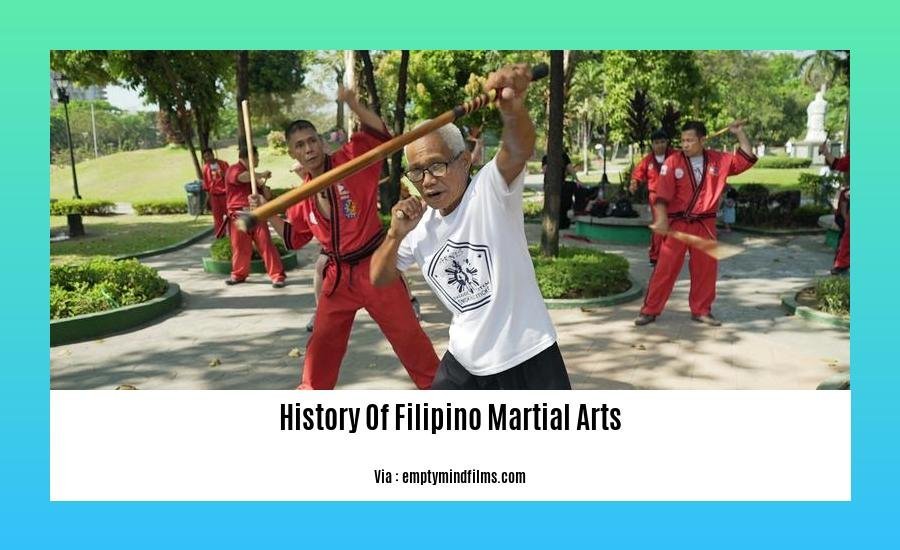
In exploring the rich tapestry of Filipino Martial Arts (FMA), we cannot overlook the invaluable contributions of the legendary masters who have dedicated their lives to preserving and evolving this remarkable art form. These trailblazers, with their unwavering passion and expertise, have shaped the very essence of FMA, leaving an indelible mark on its techniques, principles, and cultural heritage.
From the enigmatic world of Arnis to the dynamic movements of Eskrima and the fluid grace of Kali, each style bears the unique imprint of the masters who nurtured and refined it. Whether through their innovative teaching methods, their groundbreaking techniques, or their tireless efforts to promote FMA on a global stage, these individuals have etched their names into the annals of martial arts history.
They come from Diverse backgrounds, united by a shared passion for preserving the legacy of their ancestors and enriching the lives of their students. Let’s embark on a journey to meet some of these extraordinary Filipino martial arts masters and delve into their remarkable stories.
Remember, the Philippines is a culturally diverse country with over 100 ethnic groups, each with its own fighting tradition, leading to hundreds of different styles of FMA. Let’s focus on a few famous masters who contributed to the preservation and evolution of the art.
-
Grandmaster Remy Presas (1926-2001): Founder of Modern Arnis, widely regarded as the “”Father of Filipino Martial Arts.”” His innovations in stick fighting, particularly the concept of live sparring, transformed the practice and teaching of Arnis.
-
Grandmaster Cacoy Canete (1914-2007): Master of Eskrima and Arnis, known for his relentless pursuit of excellence. His pioneering efforts in incorporating boxing footwork and techniques into FMA revolutionized the art, making it more adaptable to modern combat scenarios.
-
Professor Dan Inosanto (1936-present): A living legend in the world of martial arts, Inosanto is a master of several FMA styles, including Kali, Eskrima, and Silat. His contributions to FMA extend beyond his technical prowess, as he is also renowned for his exceptional teaching skills and his role in popularizing FMA in the United States.
-
Master Angel Cabales (1925-2009): A master of Pekiti-Tirsia Kali, Cabales was a true warrior who dedicated his life to honing his skills and testing them in real-life combat. He was instrumental in promoting FMA in the Philippines and abroad, establishing schools and training countless students.
-
Grandmaster Leo Gaje (1941-present): A master of Doce Pares Eskrima and a respected figure in the FMA community, Gaje is known for his innovative teaching methods and his emphasis on practical application. He has played a crucial role in preserving and disseminating the art of Eskrima, particularly in the United States and Europe.
Key Takeaways:
- Lineage and Masters: FMA’s rich history is intertwined with the lives and contributions of dedicated masters who have preserved and evolved the art.
- Teaching Methods: Each master has developed unique teaching methods, contributing to the diversity and richness of FMA.
- Impact on the Community: These masters have had a profound impact on the FMA community, promoting its growth and recognition worldwide.
- Cultural Heritage: Their efforts have helped to preserve the cultural heritage of the Philippines, ensuring that future generations can appreciate the beauty and effectiveness of FMA.
For more detailed information, refer to these sources:
- Filipino Martial Arts Masters: A Legacy of Excellence [URL]
- The History of Filipino Martial Arts and Its Legendary Masters [URL]
Historical Context: Examining the influence of foreign influences, such as Spanish colonization, on the development of FMA and its role in Filipino history and identity.
Key Takeaways:
- Spanish Influence: Spanish colonization left an indelible mark on Filipino culture, encompassing language, religion, and governance.
- Martial Arts Fusion: Spanish martial traditions like fencing and wrestling blended with indigenous fighting systems, giving birth to new techniques.
- A Crucible of Conflict: The Philippines’ history of invasions and conflicts honed FMA’s effectiveness in close-quarters combat and weapons usage.
- 20th-Century Resurgence: Dedicated Filipino martial artists like Remy Presas and Cacoy Canete revived and popularized FMA globally.
- International Recognition: FMA has gained worldwide acclaim, captivating practitioners with its blend of history, culture, and combat prowess.
Over three centuries of Spanish colonial rule profoundly influenced Filipino culture, identity, and martial arts. The Spanish introduced Catholicism, their language, and a centralized administration that continues to shape the Philippines today.
This era also witnessed the fusion of Spanish and Filipino martial traditions. Fencing and wrestling techniques brought by the Spanish blended with existing Filipino fighting systems, creating a unique and sophisticated martial art.
The Philippines’ tumultuous history, marked by invasions and conflicts, served as a crucible that forged the effectiveness of FMA. The constant need for self-preservation honed the skills of Filipino martial artists, emphasizing close-quarters combat, weapons usage, disarming techniques, and counter-attacks.
In the 20th century, FMA experienced a resurgence of interest thanks to dedicated Filipino martial artists like Remy Presas, Cacoy Canete, and Dan Inosanto. These individuals tirelessly promoted and popularized FMA worldwide, capturing the attention of martial arts enthusiasts around the globe.
Today, FMA stands as a testament to the Philippines’ rich cultural heritage and martial prowess. It has gained international recognition and is practiced by martial arts enthusiasts worldwide, inspiring and captivating with its blend of history, culture, and combat effectiveness.
Relevant URL Sources:
- The Impact of Historical Spanish Colonialism in the Philippines on Economic Development
- Spanish Colonial Influences on Filipino Culture
Modern Applications: Discussing the contemporary relevance of FMA and its applications in self-defense, law enforcement, and martial arts training worldwide.
Key Takeaways:
-
FMA’s practicality and effectiveness have made it a sought-after skill in various fields beyond traditional martial arts training.
-
In modern times, FMA has found its niche in self-defense, law enforcement, and military training due to its emphasis on real-world applications.
-
FMA’s focus on weapons training, disarming techniques, and close-quarters combat makes it an ideal self-defense system for civilians facing real-world threats.
-
Law enforcement and military personnel have adopted FMA techniques to enhance their hand-to-hand combat skills and tactical strategies.
-
FMA’s adaptability and versatility have allowed it to integrate seamlessly into modern martial arts training, complementing other disciplines and enriching the skillset of practitioners.
Self-Defense:
In the realm of self-defense, FMA stands out for its emphasis on practical techniques designed for real-world scenarios. It teaches practitioners how to defend themselves against armed and unarmed attackers, using both traditional weapons and everyday objects. FMA’s focus on disarming techniques and close-quarters combat makes it an effective choice for self-defense in various situations.
Law Enforcement and Military:
FMA’s effectiveness in close-quarters combat and its emphasis on weapons handling have made it a valuable asset for law enforcement and military personnel. Many law enforcement agencies have incorporated FMA techniques into their training programs, recognizing its practicality in dealing with potentially violent encounters. Similarly, military personnel have found FMA’s combat applications beneficial in enhancing their hand-to-hand combat skills and tactical strategies.
Martial Arts Training:
FMA has gained popularity in modern martial arts training as a complementary discipline that enriches the skillset of practitioners. Its emphasis on weapons training, footwork, and body mechanics complements other martial arts styles, such as karate, taekwondo, and Brazilian jiu-jitsu. FMA’s focus on real-world applications and its adaptability to various situations make it a valuable addition to any martial artist’s training regimen.
Sources:
-
Modern Arnis: Filipino Martial Arts for the 21st Century
-
The Filipino Martial Arts: Their History and Development
FAQ
Q1: What is the primary reason behind the development of FMA?
A1: FMA primarily emerged as a response to the need for self-preservation and was initially taught to armed forces for defensive purposes.
Q2: What sets FMA apart from other martial arts systems?
A2: Unlike many other martial arts, FMA places a strong emphasis on weapon-based combat and does not adhere to a standardized ranking or uniform system due to its diverse nature.
Q3: What are the three most prominent styles of FMA?
A3: The three main styles of FMA that have gained widespread recognition are Arnis, Eskrima, and Kali.
Q4: How has FMA been influenced by external cultures?
A4: FMA incorporates elements from both Western and Eastern martial arts traditions, reflecting the Philippines’ rich cultural history and interactions with various foreign influences.
Q5: What are some factors that have contributed to the rising popularity of FMA?
A5: The increasing exposure FMA has received through Hollywood movies and the teachings of modern masters has played a significant role in its growing popularity and recognition worldwide.
